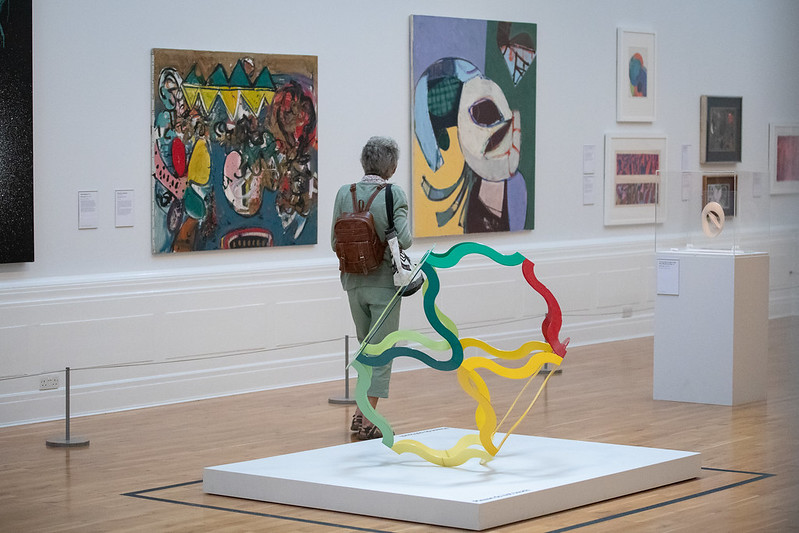
Beginner Read Social Media
Social media is a unique and powerful way to help your organisation thrive and engage with your audience. Read on to find out more.
In this article
Social media is a fast-moving landscape that blurs the lines between business and personal lives. Due to the fast pace and public-facing nature of social media it’s a good idea to have an official document that lays out how you expect employees to use social media. This is primarily for your business accounts, but usually includes guidelines for employees’ personal accounts. A good policy has the added benefits of protecting employees from online bullying and businesses from reputational damage by creating brand consistency.
The Charity Commission for England and Wales advise that “If your charity uses social media, you should have a social media policy.”
One aspect of a social media policy is a plan for what you’ll do in a communications crisis. Find out more about what to include in a crisis comms plan here.
It’s up to you how detailed your social media policy is and you should tailor the content to meet your organisation’s needs. In this article we explore what you may like to include in your policy, but you can also use the Charity Commission’s checklist. A good social media policy will be easy for everyone working at an organisation to understand and follow. A social media policy can be incorporated into a HR staff handbook, your communications guidelines, or can be a standalone document.
“A social media policy is part of a company’s business code of conduct that tells employees how they should represent themselves and the brand on social media. It includes guidelines to protect the brand’s security, privacy, and legal interests.” – Sprout Social
When creating a social media policy, you may like to include the following sections:

This section of the policy relates to your social media strategy and activity on social media. You will want to consider:
This section of a social media policy ties into your overall objectives for using social media and looks at what is and isn’t suitable for your organisation to post and engage with on the platforms.
It can include your brand guidelines – how do you speak to your audience? Are slang and emojis OK to use? Adhering to brand guidelines and brand values ensures consistency in your communications and can help prevent issues arising in the first place.
What do you have opinions on as an organisation and where do you need to remain impartial? Can you talk openly about your ethics and opinions as an organisation on social media?
One of the big areas to consider is how you interact with other users on social media.
Social media is all about engagement and ultimately you want your social media to be a two-way street for speaking with your audience. But your employees need to be clear on how the organisation responds. For example, if an audience member leaves negative feedback on your page should you respond to it openly or by direct message? Would it be suitable for you to reshare a post from a social media user who is known for being controversial? What about a post that is overly political/critical of the UK Government? If a user leaves a comment on one of your posts containing bigoted opinions, will you leave it on there, respond to it, or hide or delete it? When would you block a user and why?
If your main audience is made up of children, young or vulnerable people, then you will want to consider safeguarding at this point. This will also be picked up in section 3 – rules and guidelines for staff to follow.
The guidelines you draw up will vary according to what your organisation is, what your goals are, and who your audiences are. There isn’t a right or wrong answer for this section, the main thing is that it works for you as a business and that your employees understand what is suitable to post on behalf of the organisation and feel comfortable and confident about responding to users online.
A social media policy enables creative or cultural organisations to be clear about the ownership of their social media channels so that individuals and teams know what they are responsible for. This section looks at who at your organisation will be handling your social media activities:
In this part of your social media policy, you should outline clearly who is responsible for your social media so that anyone in the organisation can understand who is involved in managing the channels.
Do you have a proofing and approval process for posts? A lot of the organisations we work with only have one person working on their social media, so this isn’t possible, but if you do have a process for checking posts then outline this here. This can be particularly important if things go wrong and it’s a good idea to signpost here to section 4 – your social media crisis comms plan.
You may also like to indicate in this section how often will you monitor the accounts – will this be daily? Is there an expectation for how long you will take to respond to any comments? Consider how many employees are working on social media if you decide to include this. Will the accounts be monitored over the weekends? Do they need to be? For example, if you are a theatre selling tickets then you may have someone monitoring the accounts on evenings and weekends for customer support messages. Or you may not offer this and instead indicate on the platforms that the page is only monitored during specific hours.
Is there a senior member of the organisation who is responsible for your social media and ensuring that these guidelines are followed? Who ultimately will make the difficult decisions?

This section of your social media policy covers everything you need employees to consider on your creative or cultural organisation’s social media accounts, as well as their personal profiles. This section may cover:
Understanding relevant laws is important so that you don’t face legal action for your social media activity. For example, it’s important to avoid using creative content such as videos and music which are copyrighted by others. To post copyrighted material, you need permission. Establishing a procedure to keep track of copyrighted permissions can help you make sure everything shared online is compliant.
Copyright is just one of laws to comply with, the Charity Commission’s article on Charities and Social Media also lists laws relating to privacy, whistleblower protection, equality and human rights covering discrimination, victimisation, harassment, and freedom of expression.
Employees need to follow business guidelines respecting confidentiality and security. This includes GDPR guidelines. For example, sharing an image on social media that contains the names and email addresses of audience members would likely breach GDPR guidelines (unless they had all given prior permission for you to do it)
Many creative and cultural organisations have created social media community guidelines that outline their expectations on how audiences will interact with them on social media to keep their online communities safe for everyone. You may like to consider doing the same. Some examples of other creative and cultural organisations’ social media community guidelines are:
It is also important to establish how employees are expected to interact on their own personal social media. Remember that everyone at an organisation has the right to exercise their freedom of expression on social media. This isn’t about policing people’s accounts, but rather about protecting both employees and your brand reputation. It can be a good idea for employees to indicate on their profiles that their views do not represent the organisation if they choose to disclose where they work.
You need to be clear with what is expected of employees – for example, following safeguarding and data protection guidelines on their personal accounts. There may be projects that you want to keep quiet about on social media ahead of launching. Or, if our organisation is facing a lot of public criticism then your policy may be for employees to not share that they work for you on their social media to protect their privacy and online safety. Creating easy to follow guidelines up front makes it easier to keep everyone on the same page. And keeping employees up to date with policy changes, or providing regular training on the policy, can be useful.
The final section of your social media policy is your social media crisis communications plan. The rest of the Social Media Policy will ideally prevent the crisis communications plan from needing to be used, but it’s important to prepare for the possibility of a social media storm and know how you will act as an organisation.
What happens if you experience a comms crisis on social media (or otherwise)? In this section you might include:
Before a crisis occurs, this can all feel like an abstract hypothetical that you don’t need to worry about, but should one arise, you will be very grateful for this plan! It can help you to avoid things escalating by giving you time to come up with a fair and considered response. But do remember that things move quickly on social media and factor time into your planning. Not responding for too long can give the appearance that you don’t care and contribute towards people piling on.
The main thing you want to avoid is an employee trying to deal with the situation on their own, outside of normal working hours, and finding things escalate.
Social media policies are useful if they are up to date and understood by all those involved. With social media being such a fast-paced environment, it’s more challenging to make sure the policy and its implementation are current. Keeping on top of adding new platforms to your policy, or updating crisis plans with new employees, can save you valuable time and ensure that everyone at the organisation stays safe on social media.
By fostering a safe online environment and clear processes you will provide people with the space and confidence to be more creative on social media and produce brilliant content to help meet your organisation’s goals.
Find out more about creating a crisis comms plan in our article Why you need a crisis comms plan for your social media.
The Charity Commission have created guidance for creating a social media policy.
The Charity Commission also have this handy checklist of things to include in your policy.
Charity Comms have created a free social media policy template.
Wonder Legal UK’s Social Media Policy Template
The Digital Culture Network is here to support you. Please get in touch if you’d like to arrange 1-2-1 with a Tech Champion. Sign up for our newsletter below and follow us on X and LinkedIn for the latest updates.
Beginner Read Social Media
Social media is a unique and powerful way to help your organisation thrive and engage with your audience. Read on to find out more.
Beginner Read Data Analytics and Insight Social Media
Are you reviewing your social media performance? Social media analytics can inform your content strategies and help you to create great, engaging content.
Beginner Read Digital Marketing Social Media
If you are using social media to promote a creative or cultural organisation, then it’s a very good idea to have a crisis comms plan in place before you need one. This short guide to crisis planning for social media helps you to have the right policies in place, to be prepared if a crisis arises, and to learn from any experience.
Beginner Read Social Media
Social media tracking pixels are a powerful tool for marketers working in the arts and culture sector. But how do they work? How can they support and improve your paid advertising? And are there any drawbacks you need to be aware of? This article will answer these questions and give you a better understanding of a social media 'pixel'.
Beginner Read Social Media
If you work in marketing for the creative and cultural sector and you are stretched for time and resources, then a social media content calendar can be your best friend. This handy resource can form a part of your social media strategy and help you prepare and plan for the year ahead. Here is an easy guide to setting up your own social media content calendar and what you may like to include in it.
Beginner Read Social Media
In this article we have covered key social media metrics and recommended next steps.




